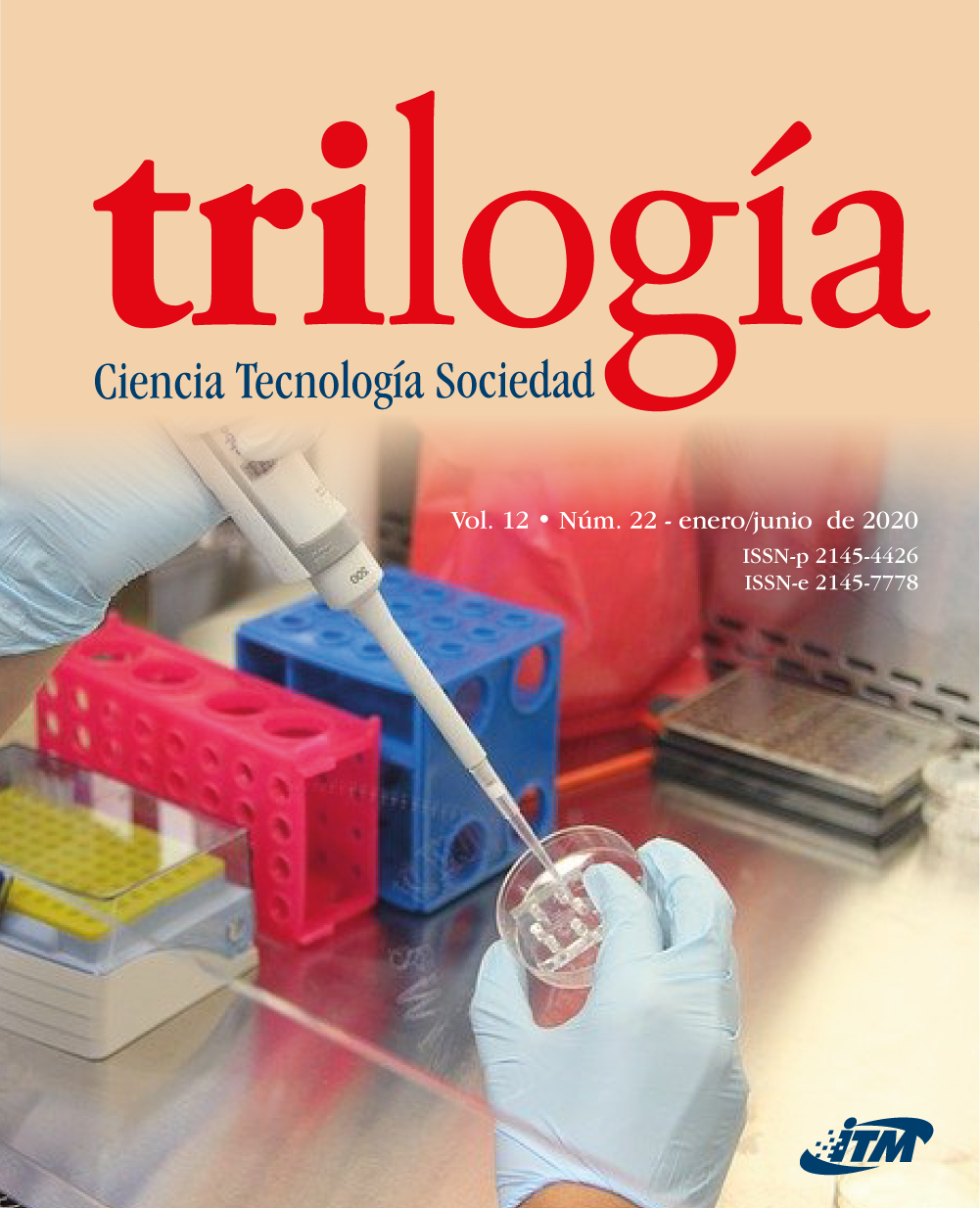Artifacts and Natural Modified Entities Trough Biotechnology
Abstract
The philosophical problem represented by genetically modified organisms has been insufficiently addressed in discussions of artifacts in the philosophy of technology. The purpose of this article is to analyze different philosophical positions regarding this type of complex natural entities, which cannot be defined as simple natural objects, since they have been intervened by means of technique, but neither as artificial objects, similar to industrial machines or to another type of artifactual object. Two philosophical postures are evaluated: the first asserts that these entities are artificial, in the understanding that artifacts are man-made objects. The second says that these modified entities are artificially produced natural objects, according to Quintanilla and Jonas. A proposal is presented that offers arguments to recognize, from several perspectives, that natural entities are autogenerative systems: the constitutive autonomy of Maturana and Varela, the self-organization postulated by Kauffman and the autonomy of Ruiz-Mirazo and Moreno. A definition of genetically modified organisms is proposed, arguing that they are autogenerative living systems that have an intentional design in the artificial components. The main consequence is that such entities are not equal to artefacts.
References
Cuevas Badallo, A. (2008). Los bioartefactos: viejas realidades que plantean nuevos problemas en la adscripción funcional. Argumentos de razón técnica, (11), 71-96. https://dialnet.unirioja.es/servlet/articulo?codigo=3824983
Gibson, D. G., Glass, J. I, Lartigue, C., Noskov, V. N., Chuang, R. Y., Algire, M. A., Benders, G. A., Montague, M. G., Ma, L., Moodie, M. M., Merryman, C., Vashee, S., Krishnakumar, R., Assad-Garcia, N., Andrews-Pfannkoch, C., Denisova, E. A., Young, L., Qi, Z. Q., Segall-Shapiro, T. H., Calvey, C. H., Parmar, P. P., Hutchison III, C. A., Smith, H. O., Venter, J. C. (2010). Creation of a Bacterial Cell Controlled by a Chemically Synthesized Genome. Science, 329(5987), 52-56. https://doi.org/10.1126/science.1190719
Hernández González, M. & Prieto Pérez, J. L. (2007). Historia de la ciencia (Vol. 2). Fundación Canaria Orotava de Historia de la Ciencia.
Jonas, H. (1997). Técnica, medicina y ética: sobre la práctica del principio de responsabilidad. Paidós.
Kauffman, S. (1995). At Home in the Universe: The Search for the Laws of Self-Organization and Complexity. Oxford University Press.
Kauffman, S. (2003). Investigaciones: complejidad, autoorganización y nuevas leyes para una biología general. Tusquets.
Kroes, P. (2010). Engineering and the Dual Nature of Technical Artefacts. Cambridge Journal of Economics, 34(1), 51–62. https://doi.org/10.1093/cje/bep019
Kroes, P. & Meijers, A. (2006). The dual nature of technical artefacts. Studies in History and Philosophy of Science, 37(1), 1-4. https://doi.org/10.1016/j.shpsa.2005.12.001
Márquez Sánchez, M. M. (2010). El estatuto ontológico de los organismos modificados y sus consecuencias epistémicas (Tesis de doctorado). Universidad Nacional Autónoma de México, Ciudad de México. https://repositorio.unam.mx/contenidos/el-estatuto-ontologico-de-los-organismos-modificados-y-sus-consecuencias-epistemicas-62043?c=pQ8wXB&d=false&q=El%20estatuto%20ontol%C3%B3gico&i=1&v=0&t=search_0&as=0
Maturana, H. & Varela, F. (1994). De máquinas y seres vivos. Autopoiesis: la organización de lo vivo. Editorial Universitaria.
Millikan, R. G. (1989). In Defense of Proper Functions. Philosophy of Science, 56(2), 288-302. https://doi.org/10.1086/289488
Mitcham, C. (1994). Thinking through Technology: The Path between Engineering and Philosophy. The University of Chicago Press.
Monterroza Ríos, A. D. (2018). La naturaleza heterogénea de los artefactos técnicos: Un análisis ontológico. Fondo Editorial ITM.
Parente, P. (2019). Organismos, máquinas y bioartefactos. Problemas y variantes en la perspectiva de G. Simondon. Artefactos, 8(1), 6-23. http://dx.doi.org/10.14201/art201981623
Quintanilla, M. A. (2005). Tecnología: un enfoque filosófico y otros ensayos de filosofía de la tecnología. Fondo de Cultura Económica.
Ruiz-Mirazo, K. & Moreno, A. (2004). Basic Autonomy as a Fundamental Step in the Synthesis of Life. Artificial life, 10(3), 235-259. https://doi.org/10.1162/1064546041255584
Sperber, D. (2007). Seedless Grapes: Nature and Culture. En E. Margolis y S. Laurence (editores), Creations of the Mind: Theories of Artifacts and Their Representation (pp. 124-137). Clarendon Press. https://www.researchgate.net/profile/Dan_Sperber/publication/30527616_Seedless_grapes_Nature_and_culture/links/0fcfd50c649df8fcea000000/Seedless-grapes-Nature-and-culture.pdf
Varela, F. J. (1979). Principles of Biological Autonomy. North Holland.
Wright, L. (1973). Functions. The Philosophical Review, 82(2), 139-168. http://mechanism.ucsd.edu/~bill/teaching/w10/wright.functions.%201973.pdf
Downloads
Copyright (c) 2020 Instituto Tecnológico Metropolitano

This work is licensed under a Creative Commons Attribution-NonCommercial-ShareAlike 4.0 International License.
Altmetric










